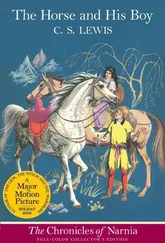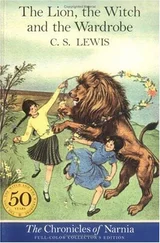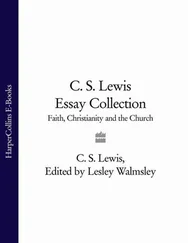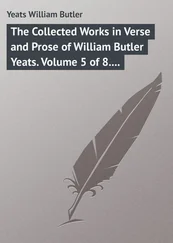Shortly before The Allegory of Love was published, Oxford University Press had announced that it was undertaking the production of The Oxford History of English Literature in twelve volumes, each the work of a single author. Lewis was persuaded to write the volume on the sixteenth century and although English Literature in the Sixteenth Century, Excluding Drama would not be published until 1954, he was labouring over this magisterial work during most of the years the letters in this volume were being written. ‘When they asked me to do that,’ he told one of his students, ‘I was tremendously flattered. It’s like a girl committing herself to marrying an elderly millionaire who’s also a duke. In the end she finally has to settle down with the chap, and it’s a hellish long time before he dies.’ 9
The next Lewis to appear is Barfield’s Highly Successful Author of Fiction. This volume contains many letters Lewis wrote in response to the wide appeal of his interplanetary trilogy, Out of the Silent Planet (1938), Perelandra (1943) and That Hideous Strength (1945). But just when the tone of the letters suggests that Lewis had written all the fiction he would write, the book concludes with an unexpected ‘twist’.
To understand the unexpectedness of the ‘twist’ it is necessary to summarize Lewis’s relationship to Mrs Janie King Moore up to the end of this book. 10 Lewis met Mrs Moore in 1917, shortly after she arrived in Oxford with her eleven-year-old daughter, Maureen. 11 Mrs Moore was in Oxford because her son, Edward ‘Paddy’ Moore, was a member of the Officers’ Training Corps billeted in Keble College. 12 Lewis began his training with the Officers’ Training Corps at the same time, and he and Paddy shared a room in Keble. Lewis came to know Paddy’s family, and the young men promised each other that if either of them survived the war he would look after Lewis’s father and Paddy’s mother. When their training ended Paddy was sent to France with the Rifle Brigade, and Lewis soon followed with the Somerset Light Infantry. Paddy was killed at Pargny on 24 March 1918, and Lewis was wounded weeks later in the Battle of Arras.
When Lewis returned to Oxford in 1919 to continue his studies at University College, he was joined by Mrs Moore and Maureen who took accommodation in Headington. Mrs Moore, forty-seven at this time, had been separated from her husband since 1908. Thereafter, the ‘family’, as Lewis began to refer to himself and the Moores, lived in numerous rented properties until, in 1930, they bought The Kilns in Headington Quarry.
Roger Lancelyn Green and I pointed out in our biography of Lewis that while his relationship with Mrs Moore ‘may have started with that incomprehensible passion which middle-aged women seem occasionally able to inspire in susceptible youths…it soon turned from the desire for a mistress into the creation of a mother-substitute.’ 13 Indeed we come across what may be the first reference to Mrs Moore as ‘mother’ in a letter to Sister Penelope of 9 November 1941, in which Lewis asked her to ‘Pray for Jane …She is the old lady I call my mother and live with (she is really the mother of a friend)—an unbeliever, ill, old, frightened, full of charity in the sense of alms, but full of uncharity in several other senses. And I can do so little for her.’ 14
By the middle of the 1940s Mrs Moore, in her late seventies, was crippled, often in great pain, and in need of constant care. Lewis divided his time between his duties at Magdalen College and nursing his old friend. ‘My mother is old & infirm, we have little and uncertain help, and I never know when I can, even for a day, get away from my duties as a nurse and a domestic servant’, 15 Lewis wrote to Lord Salisbury on 9 March 1947. It was not in Lewis’s nature to abandon anyone and by the spring of 1949 the situation was worse. Mrs Moore could hardly be left alone for a minute and Lewis was worn out.
But just when he feared that old age had crept up on him and that his literary impulses were drying up, he began dreaming of lions. Suddenly Aslan, the great royal beast of Narnia, bounded in. ‘Apart from that,’ Lewis said, ‘I don’t know where the Lion came from or why he came. But once He was there He pulled the whole story together, and soon He pulled the six other Narnian stories in after him.’ 16 This volume ends with Lewis writing to Owen Barfield and the illustrator of Narnia, Pauline Baynes, about one of the best-loved books in the world, The Lion, the Witch and the Wardrobe.
There is still another C. S. Lewis—‘the writer and broadcaster of popular Christian apologetics’. Following the publication of The Problem of Pain (1940) the BBC’s Director of Religious Broadcasting, the Reverend James W. Welch, wrote to Lewis on 7 February 1941 asking if he would be willing to give a series of radio talks ‘on something like “The Christian Faith As I See It”’. From this came the four series of talks eventually published as Mere Christianity. There has never been anything like them. Of the many reasons for their success, one must be simply that Lewis believed the Gospel to be true. And because true, therefore important. ‘Christianity is a statement,’ said Lewis, ‘which, if false, is of no importance, and, if true, of infinite importance. The one thing it cannot be is moderately important.’ 17
Everything the three ‘Lewises’ wrote is immensely readable, but the BBC broadcasts taught him to translate complicated truths into the vernacular. ‘Any fool can write learned language,’ Lewis once observed, ‘The vernacular is the real test. If you can’t turn your faith into it, then either you don’t understand it or you don’t believe it.’ 18 But Lewis knew that no vernacular lasts forever, and one of the most valuable letters in this book is his reply to Canon John Beddow of 7 October 1945. Beddow, struck by the success of Lewis’s radio broadcasts, asked him to ‘translate’ some writings for the Christian Workers’ Union. ‘People praise me as a “translator”’, Lewis replied, ‘but what I want is to be the founder of a school of “translation”. I am nearly forty-seven. Where are my successors?’ 19
Where indeed? While we wait in hope for them to appear, we rejoice in Lewis’s theological legacy. It is breathtaking that during the war, when he had so much else to do, Lewis provided the Western world with its primary body of modern Christian apologetics— The Problem of Pain (1940), The Screwtape Letters (1942), The Abolition of Man (1943), Mere Christianity (1942–4), The Great Divorce (1946) and Miracles (finished in 1945, published in 1947).
We may now add to this list Lewis’s theological letters, most of which appear here for the first time, or at least for the first time in their entirety. Lewis was annoyed when he saw how many letters he received as a result of his first radio talks. On 25 February 1942 he complained to Eric Fenn, the director of his broadcasts, ‘I wrote 35 letters yesterday…It “gets one down”—not to mention postage.’ This fretfulness ended as quickly as it began: Lewis realized that if you publish a book you are responsible for its consequences. As more and more people turned to him for help he saw it as a clear duty to help them, and letter-writing thus became a valuable aspect of his apostolate. Thereafter Lewis answered nearly all letters by return of post. When one considers what a large part of the letters in this volume are replies to those who wrote to him about his books it must seem that Lewis spent more time replying to their letters than writing the books themselves.
In this he was given great help by his devoted brother, Warnie Lewis. Warnie had acquired a portable Royal typewriter many years before and, while he never advanced beyond the hunt-and-peck system with two fingers, he did it well. He came to the job of being his brother’s secretary well qualified; between 1933 and 1935 he had typed the 3,000-odd pages that make up the unpublished ‘Memoirs of the Lewis Family: 1850–1930’, or the ‘Lewis Papers’ as they are known. While we cannot be certain when Warnie began helping his brother, the first of his typed letters to appear in the Collected Letters is that to Eric Fenn of 30 November 1942.
Читать дальше












